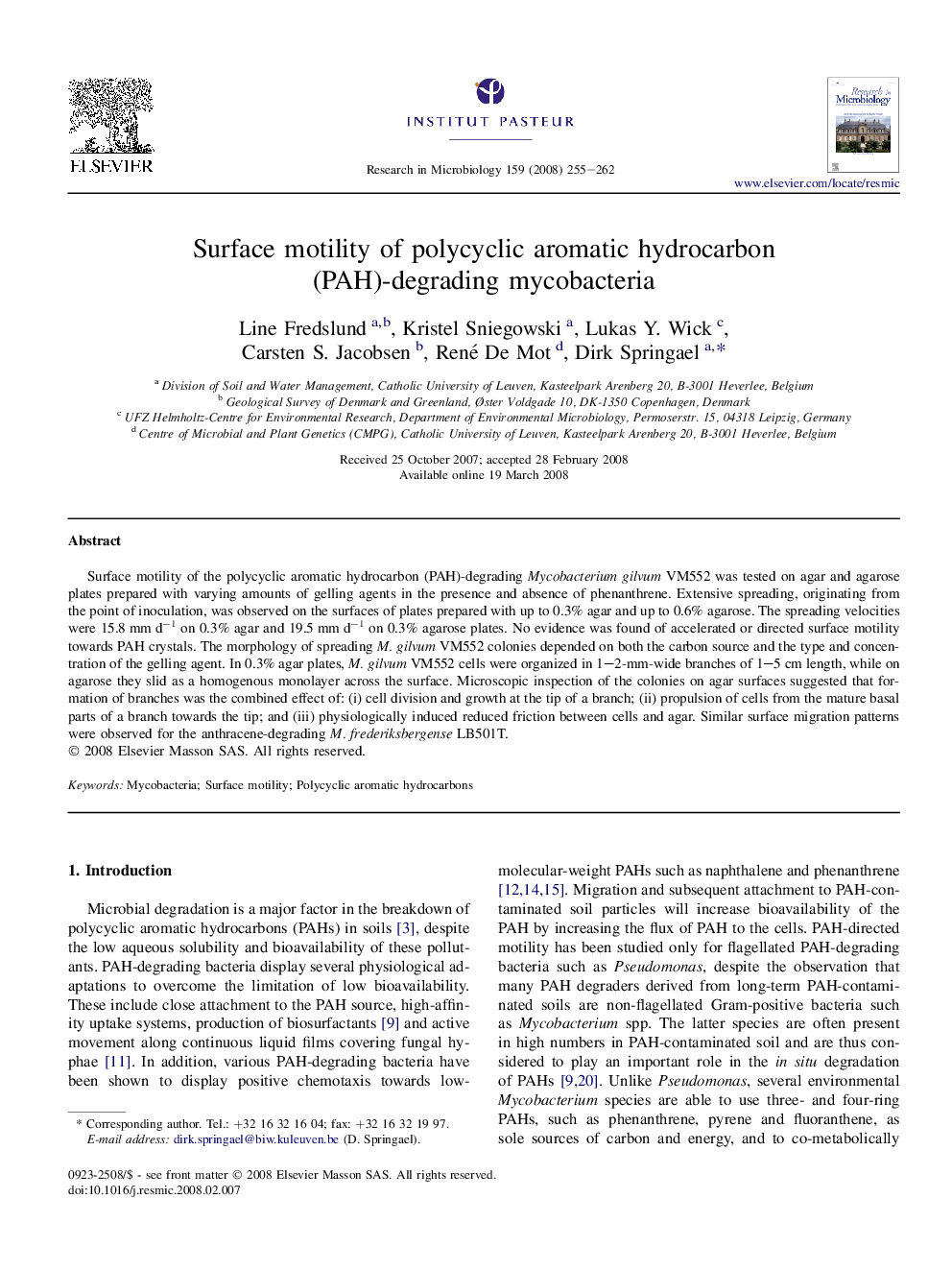| Article ID | Journal | Published Year | Pages | File Type |
|---|---|---|---|---|
| 4359539 | Research in Microbiology | 2008 | 8 Pages |
Surface motility of the polycyclic aromatic hydrocarbon (PAH)-degrading Mycobacterium gilvum VM552 was tested on agar and agarose plates prepared with varying amounts of gelling agents in the presence and absence of phenanthrene. Extensive spreading, originating from the point of inoculation, was observed on the surfaces of plates prepared with up to 0.3% agar and up to 0.6% agarose. The spreading velocities were 15.8 mm d−1 on 0.3% agar and 19.5 mm d−1 on 0.3% agarose plates. No evidence was found of accelerated or directed surface motility towards PAH crystals. The morphology of spreading M. gilvum VM552 colonies depended on both the carbon source and the type and concentration of the gelling agent. In 0.3% agar plates, M. gilvum VM552 cells were organized in 1–2-mm-wide branches of 1–5 cm length, while on agarose they slid as a homogenous monolayer across the surface. Microscopic inspection of the colonies on agar surfaces suggested that formation of branches was the combined effect of: (i) cell division and growth at the tip of a branch; (ii) propulsion of cells from the mature basal parts of a branch towards the tip; and (iii) physiologically induced reduced friction between cells and agar. Similar surface migration patterns were observed for the anthracene-degrading M. frederiksbergense LB501T.
